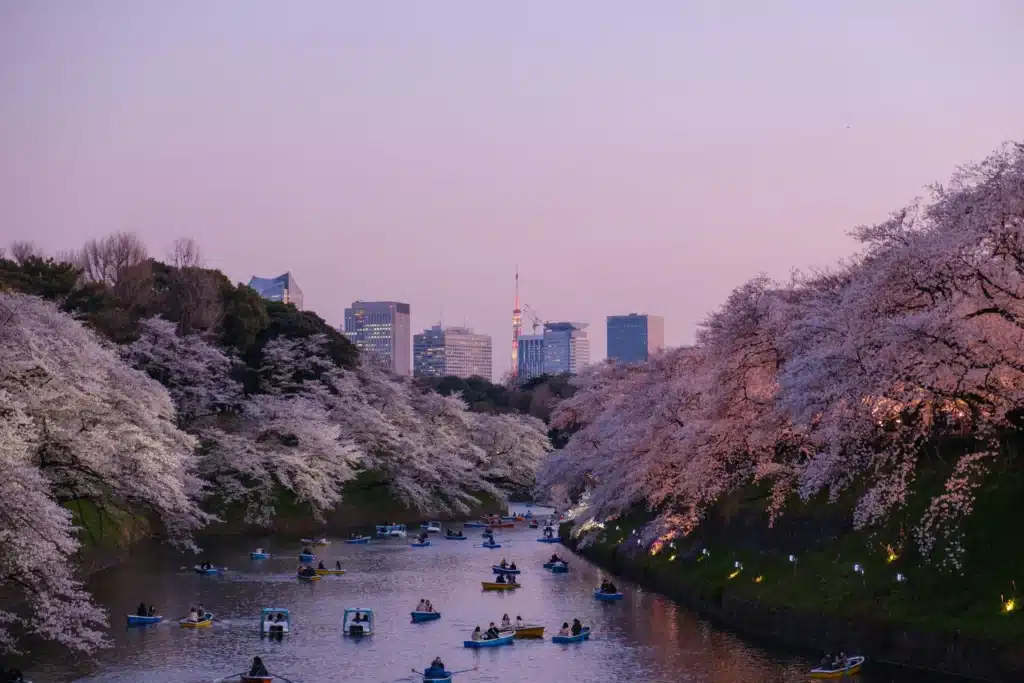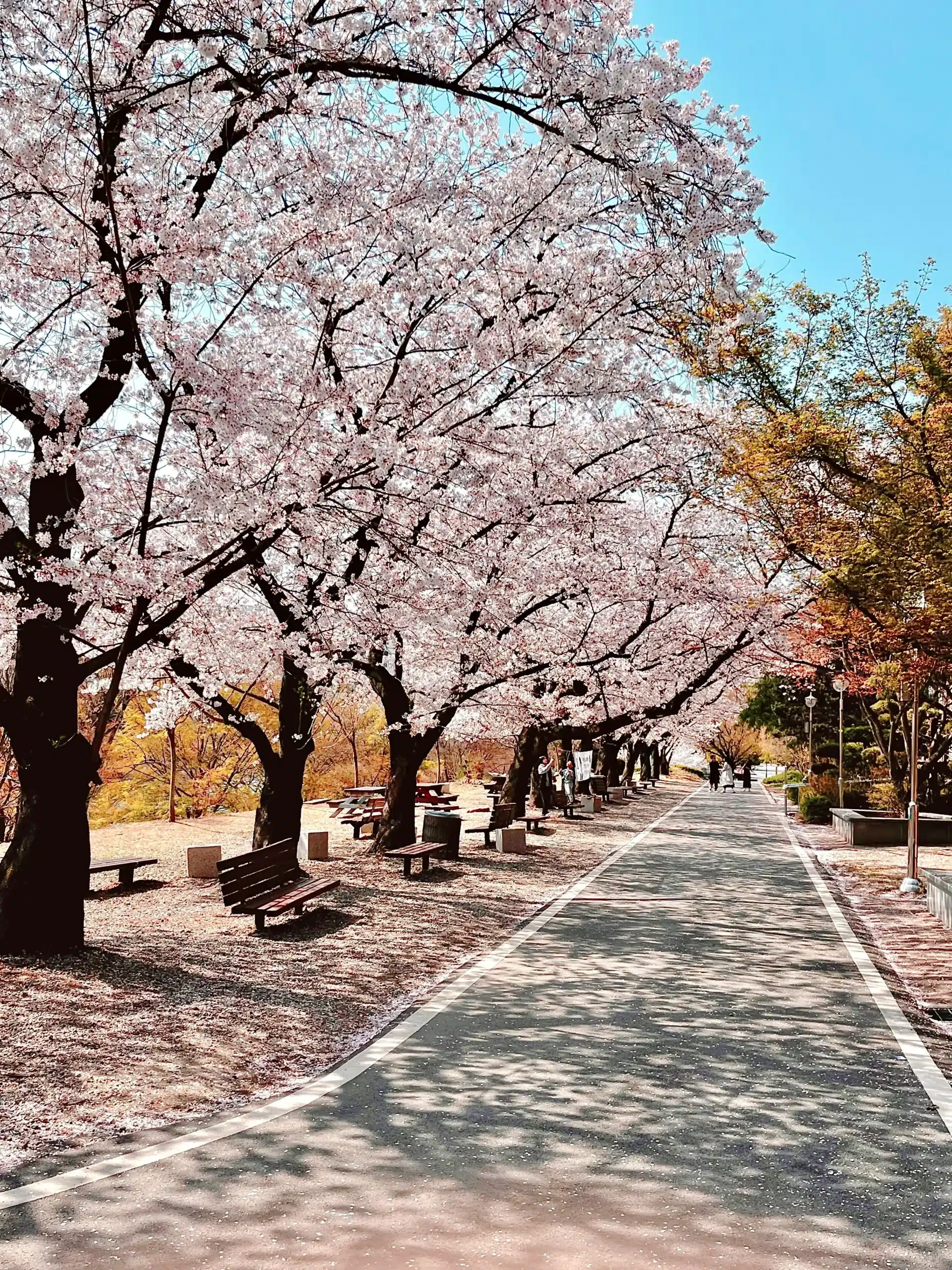Every spring, the iconic sakura (cherry blossom) takes center stage across Japan. These beloved flowers attract millions of locals and tourists alike to hanami (flower viewing) parties under clouds of pink and white petals.
The sights of cherry trees blooming against historic temples and cities like Kyoto seem uniquely Japanese. Their ephemeral beauty is celebrated widely in Japanese culture – in poetry, songs, art, and festivals.
But are these symbols of the Japanese spirit actually original to Japan? Modern research suggests otherwise.
A Brief History of Cherry Blossoms in Japan
Cherry blossoms hold rich cultural meaning in Japan and are considered part of Japanese identity. They have a long cultivation history in the country:
- Fossil evidence shows cherry tree ancestors flowering in Japan over 100,000 years ago during the Jōmon period of prehistoric Japan. These extinct species may be early ancestors of modern sakura trees.
- Ancient Japanese texts reference cherry blossom viewing festivals occurring as early as the 8th century CE. By this time they held cultural significance.
- Over the centuries, Japanese growers have cultivated over 200 varieties of ornamental cherry trees. This specialized breeding led to diverse types blossoming in vivid pinks and whites.
The Japanese have thus had a centuries-long partnership with the flowering cherry trees that today no one can imagine Japan without.
But where did these cherished sakura originally come from before arriving in Japan?
The Theory: Sakura Originated From the West
While cherry blossoms feel quintessentially Japanese today, research suggests their distant ancestors may have origins farther west and north along ancient trade and migration routes:
- Genetic studies propose the first cherry species derived from ancestors in the Himalayan foothills.
- These ancestral cherries gradually spread farther east over land routes, likely by early human migration and trade.
- Prehistoric humans may have carried cherries first to China and Korea, finally reaching Japan 2000+ years ago.
If true, this means cherry trees are not endemic (naturally occurring) in Japan’s flora. No wild, untouched cherry tree populations occur naturally in Japan’s forests and mountains.
So while today’s sakura represent centuries of specialized Japanese cultivation, their long-ago ancestors appear to have beginnings farther west.

The Case for Japan as Adopted Homeland
While not originally endemic, strong arguments exist for Japan as the cherry tree’s modern adopted homeland:
1. Japan cultivated cherry trees for centuries
| Time Period | Cultivation Developments |
|---|---|
| 700 CE | Cherry trees planted near imperial palaces |
| 1400s | Specialized varieties bred for ornamental flowers |
| 1600s | Cherry tree gift exchange custom begins |
| 1700s | Hundreds of new varieties developed |
| 1900s | Cherry trees gifted to other nations as sign of friendship |
Centuries of nurturing cherry cultivation in Japan allowed imported ancestors to uniquely diversify into iconic varieties found nowhere else.
Many exist purely for aesthetic appreciation, unlike fruiting cherry varieties. Japan’s long stewardship rightfully designates them signature Japanese botanicals.
2. Japan’s climate offered ideal conditions for cherries to thrive
- Four distinct seasons supporting dormancy in winter
- Generally temperate climate with adequate chill hours
- Sufficient summer warmth and sunlight exposure
These conditions allowed productive flowering and propagation year after year. Japan’s isolation as an island nation further concentrated cultivation absent influences from neighboring mainland climates.
3. Sakura trees integrated into the cultural identity of Japan
Beyond physical cultivation, the Japanese wholeheartedly adopted cherry blossoms into their society on philosophical, spiritual, and artistic levels:
- Represent concepts like renewal and impermanence in Buddhist teachings
- Appear frequently in poetry, art, film, and other media
- National obsession with annual hanami festivals and sakura symbolism
- International goodwill exchange of cherry tree gifts started in 1912
No matter the original geography, cherry trees now thrive in Japanese culture as much as its cultivation fields.
Conclusion: Are Cherry Blossom Native to Japan
Did cherry blossoms originally evolve in Japan? Research hints earlier ancestral origins in western China or the Himalayas.
But after centuries of specialized horticulture in Japan, do origins really matter? The Japanese cultivated an imported plant so effectively that sakura trees now intrinsically represent facets of Japanese identity. Their history in the country spans back much longer than modern ideas of nationhood.
In reality, native status often defies clear-cut definitions. A species spreads over such immense spans of time, often with human mobility assistance.
For allintents and purposes, the Japanese cherry tree qualifies as a culturally endemic species. Hanami season will continue as a high point of spring Regardless of ancestral quibbles over terminology.
No true consensus exists on definitions of native status across scholarship. But the deeper cultural resonance of this bloom remains indisputable.
Key Takeaways
- Research into cherry tree genetics continues but may never yield definitive native origins
- Centuries of Japanese cultivation make cherry blossoms iconic fixtures in the nation’s landscape
- The rich philosophical and social relevance of sakura in Japan overshadows inconclusive academic debate
Wherever ancestral cherries first sprouted, Japan wholeheartedly adopted them as signatures of seasonal beauty and renewal. Their origins matter far less than their modern meanings.
Come spring, all can agree – no place celebrates cherry blossom culture more beautifully than Japan.
